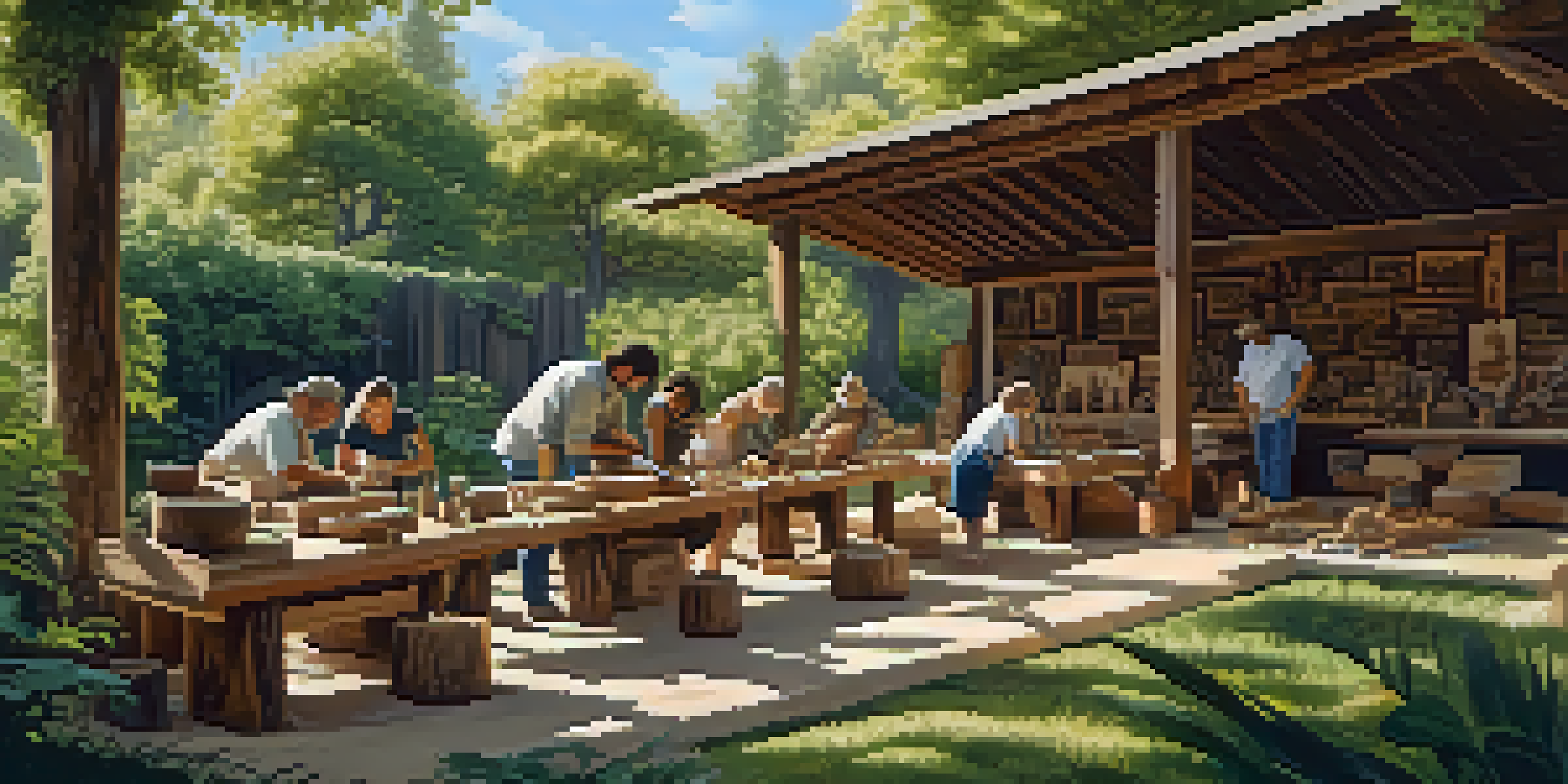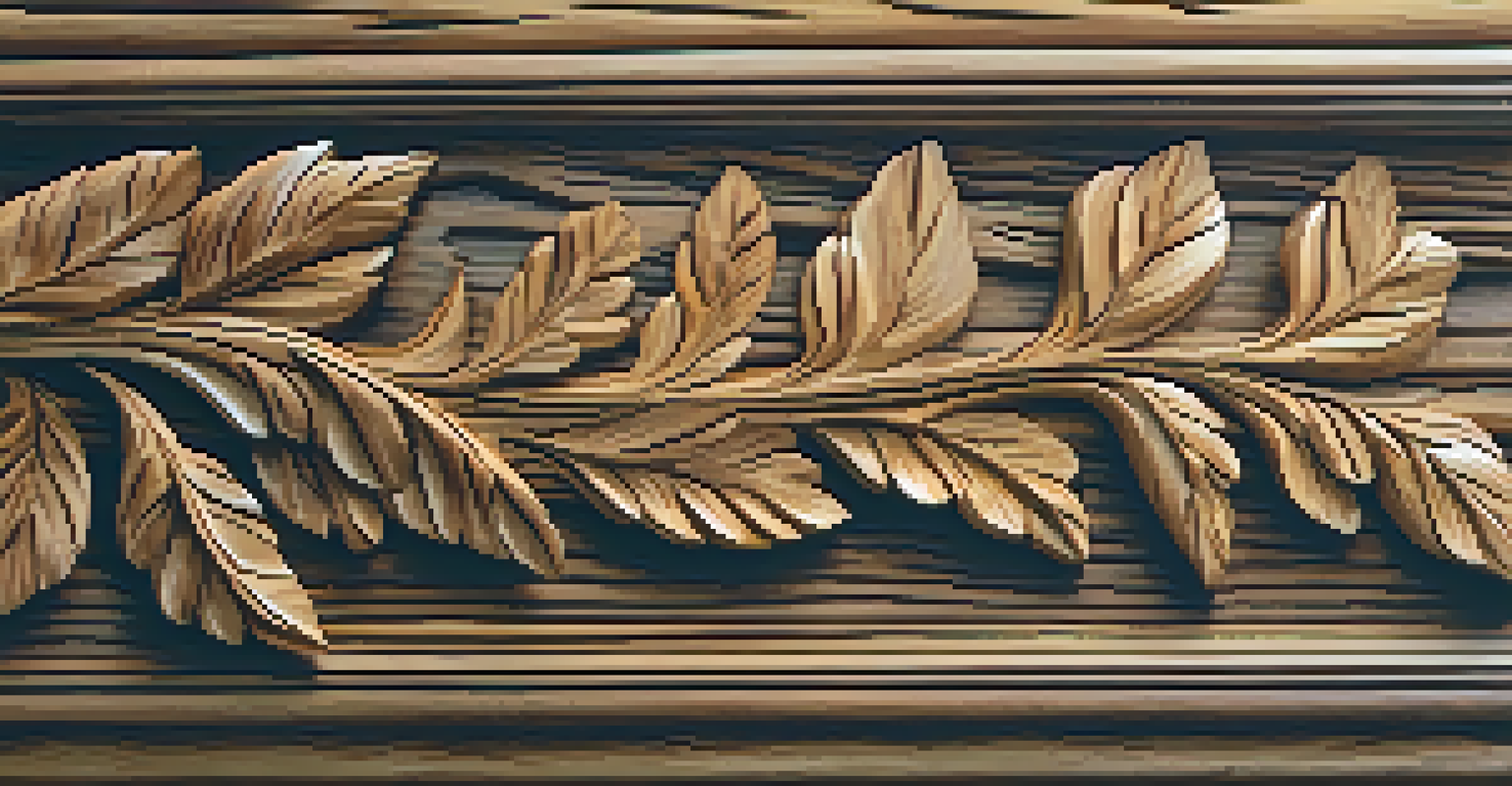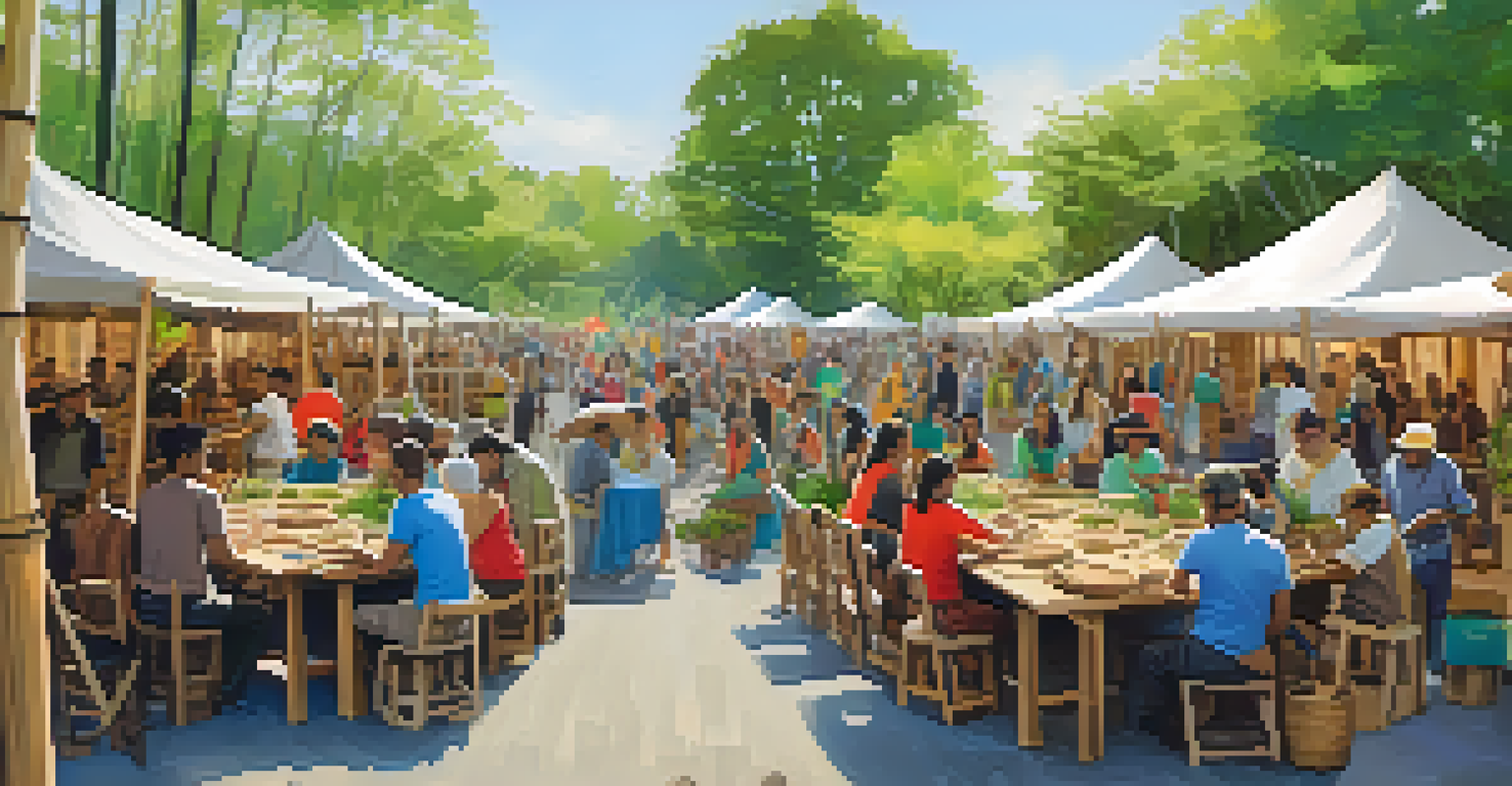Sustainable Carving: Techniques for Eco-Friendly Artistry

Understanding Sustainable Carving: A Nature-Friendly Approach
Sustainable carving is all about creating art while being kind to our planet. It emphasizes using materials and methods that minimize environmental impact. This approach not only preserves the natural world but also enriches the artistic process itself, allowing artists to connect more deeply with their materials.
The greatest threat to our planet is the belief that someone else will save it.
At its core, sustainable carving encourages the use of renewable resources. For instance, artists can opt for reclaimed wood or sustainably sourced materials, which significantly reduces deforestation. By choosing these eco-friendly alternatives, carvers can make a positive statement about their commitment to the environment.
Additionally, sustainable carving promotes creativity and innovation. Artists are often challenged to think outside the box, finding unique ways to repurpose materials. This not only leads to one-of-a-kind pieces but also inspires others in the community to adopt similar practices.
Choosing Eco-Friendly Materials for Carving Projects
Selecting the right materials is crucial for sustainable carving. Artists can explore options like bamboo, which grows rapidly and is highly renewable. Other choices include reclaimed wood from old furniture or construction sites, giving new life to materials that would otherwise be discarded.

Another great option is using natural, non-toxic finishes and adhesives. Traditional products can contain harmful chemicals, so opting for plant-based or water-based alternatives ensures the safety of both the artist and the environment. It's a simple yet impactful change that can make a significant difference.
Embrace Eco-Friendly Materials
Choosing sustainable materials like reclaimed wood and bamboo is essential for minimizing environmental impact in carving.
Moreover, incorporating found objects into carvings can add character and history to a piece. Items like driftwood or scrap materials can often be transformed into stunning works of art, showcasing the beauty of imperfection while reducing waste.
Techniques for Sustainable Carving: Tools and Approaches
When it comes to sustainable carving techniques, the tools can make a big difference. Hand tools, like chisels and knives, often have a smaller carbon footprint than electric tools. They also encourage mindfulness, allowing artists to work slowly and intentionally, resulting in more thoughtful creations.
Creativity is intelligence having fun.
Another technique is to practice subtractive carving, where material is removed to create the final piece. This method can be more efficient and less wasteful, as it requires less material overall. Carvers can focus on the natural shapes and forms of their chosen medium, enhancing the organic feel of their work.
Additionally, artists can experiment with mixed media, combining different sustainable materials for a single piece. This approach not only adds visual interest but also allows for greater expression while staying true to eco-friendly principles.
Incorporating Nature-Inspired Designs in Carving
Nature has always been a source of inspiration for artists, and sustainable carving is no exception. By incorporating organic shapes and patterns, artists can create pieces that reflect the beauty of the natural world. This connection to nature can also serve as a reminder of the importance of preserving it.
Using motifs like leaves, flowers, and animals can resonate with audiences, sparking conversations about environmentalism and sustainability. These designs often evoke emotions and foster appreciation for the environment, encouraging viewers to think about their own impact on the planet.
Community Drives Sustainable Art
Workshops and community initiatives foster collaboration and knowledge sharing, empowering artists to adopt eco-friendly practices.
Furthermore, artists can draw direct inspiration from their surroundings. By observing local flora and fauna, they can infuse their work with authenticity and personal connection, making each piece not just a work of art but also a story that highlights the importance of conservation.
The Role of Workshops and Community in Sustainable Carving
Workshops play a vital role in promoting sustainable carving practices. They provide a platform for artists to share knowledge, techniques, and materials. By learning from one another, participants can develop their skills while fostering a sense of community and shared responsibility towards the environment.
Community initiatives can also encourage the use of sustainable materials. Local groups can organize wood swaps or educational events that highlight eco-friendly practices. These gatherings not only raise awareness but also empower artists to make more informed choices.
Moreover, collaboration between artists can lead to innovative solutions for sustainable practices. When creatives come together, they can brainstorm ideas and share resources, amplifying their impact on the environment and inspiring others to follow suit.
Showcasing Sustainable Art: Exhibitions and Online Platforms
Exhibitions dedicated to sustainable art can shine a spotlight on eco-friendly carving techniques. These events allow artists to showcase their work while educating the public about the importance of sustainability in the arts. They create a space for dialogue, encouraging visitors to consider their own environmental impact.
Online platforms also provide an excellent opportunity for artists to share their sustainable practices. Social media and websites enable creators to reach a wider audience, promoting their work and inspiring others to embrace eco-friendly artistry. This digital presence can help foster a global community committed to sustainability.
Future Trends in Sustainable Carving
Innovations like bioplastics and modern tools are shaping the future of sustainable carving, promoting creativity while respecting the environment.
Furthermore, showcasing sustainable art can influence consumer choices. As more people become aware of the environmental impact of their purchases, they may seek out eco-friendly options, supporting artists who prioritize sustainability in their work.
The Future of Sustainable Carving: Trends and Innovations
The future of sustainable carving looks promising, with new trends emerging that prioritize eco-friendliness. Innovations in material sourcing, such as bioplastics and recycled materials, are gaining traction among artists. These advancements allow for greater creative freedom while still respecting the environment.
Additionally, technology is playing a role in sustainable artistry. Tools like CNC machines can be used to minimize waste by optimizing cuts and designs. This fusion of traditional craftsmanship with modern technology can lead to more precise and sustainable outcomes.

As awareness of environmental issues continues to grow, the demand for sustainable art will likely rise. Artists who embrace these practices not only contribute to a healthier planet but also position themselves at the forefront of a movement that values creativity alongside environmental stewardship.